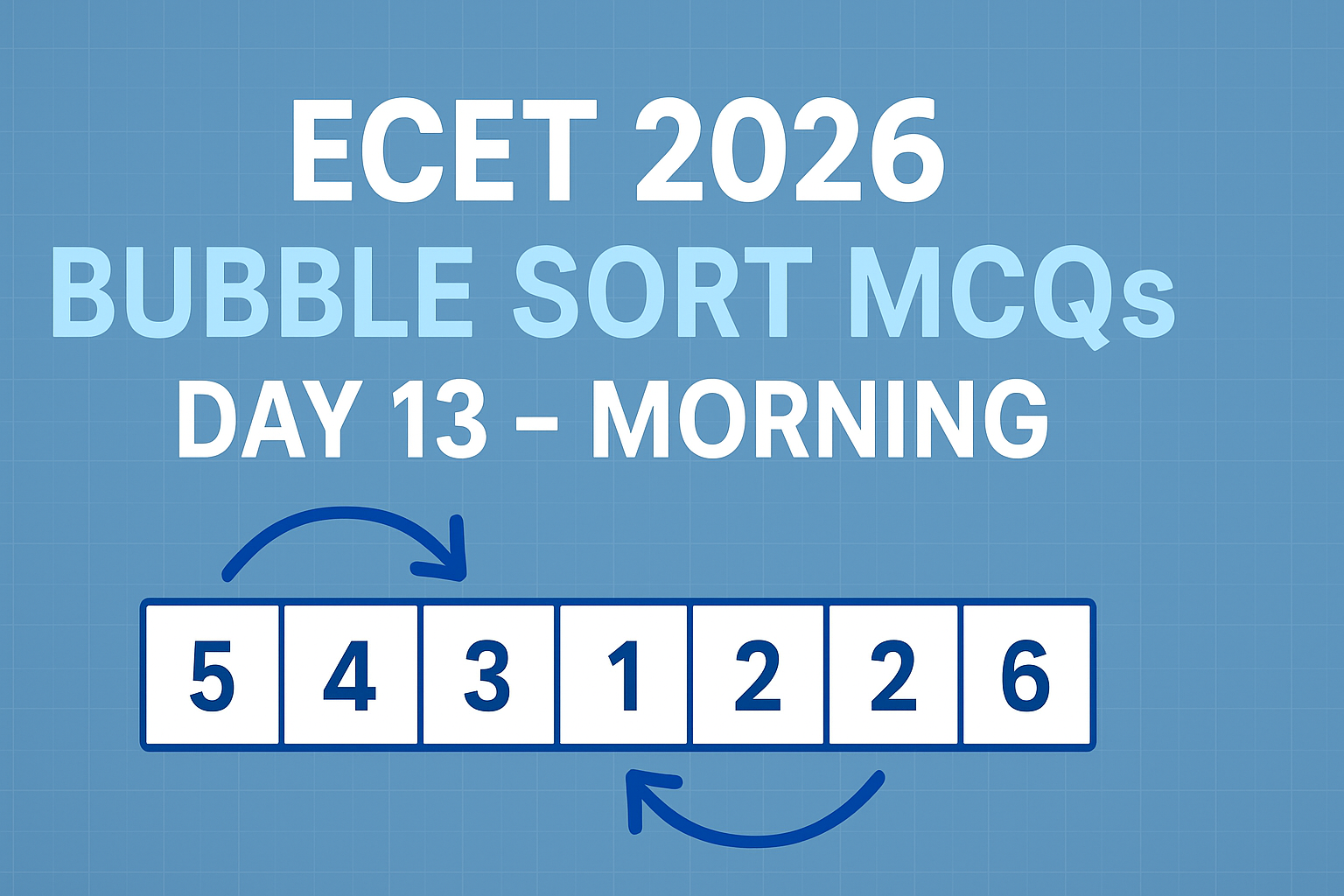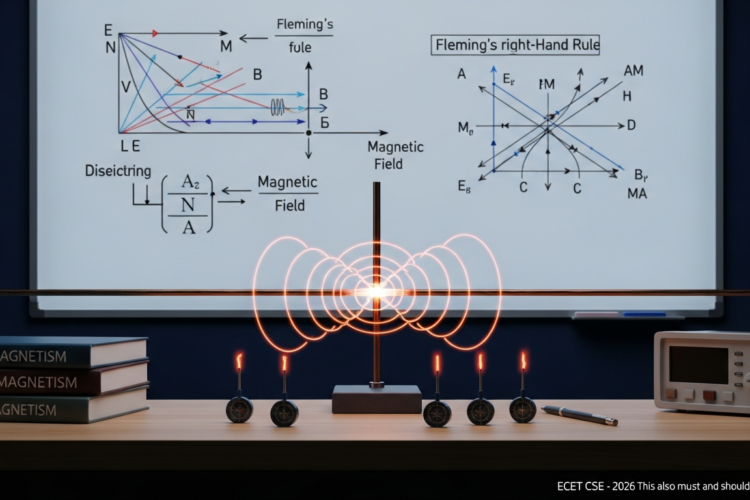
Sorting algorithms are fundamental in computer science and frequently asked in ECET 2026 exams for CSE students. Among these, Bubble Sort is the simplest and often the first sorting technique you learn. Understanding how Bubble Sort works is crucial for building your foundation in algorithms and scoring well in the Data Structures section. Let’s explore the concept and solve 10 important MCQs to help you prepare effectively.
📘 Concept Notes – Bubble Sort
🔍 What is Bubble Sort?
Bubble Sort is a simple comparison-based sorting algorithm that repeatedly steps through the list, compares adjacent elements, and swaps them if they are in the wrong order. The pass through the list is repeated until the list is sorted.
⚙️ How Bubble Sort Works?
- Compare the first two elements.
- If the first element is greater than the second, swap them.
- Move to the next pair and repeat.
- After the first pass, the largest element is “bubbled” to the end.
- Repeat the process for the remaining list until no swaps are needed.
🕰️ Time Complexity
- Best Case: O(n) (when the list is already sorted)
- Average and Worst Case: O(n²)
🔑 Key Points
- Bubble Sort is stable (maintains relative order of equal elements).
- It is an in-place sorting algorithm (requires no extra space).
- Inefficient for large datasets but easy to understand.
- Uses multiple passes through the list.
🔟 10 Most Expected MCQs – ECET 2026 [Bubble Sort]
Q1. What is the main operation in Bubble Sort?
A) Insertion
B) Swapping adjacent elements
C) Dividing array
D) Merging subarrays
Q2. What is the time complexity of Bubble Sort in the worst case?
A) O(n)
B) O(log n)
C) O(n²)
D) O(n log n)
Q3. After the first pass of Bubble Sort, which element is in its correct position?
A) Smallest
B) Largest
C) Middle
D) Random
Q4. Is Bubble Sort a stable sorting algorithm?
A) Yes
B) No
C) Depends on implementation
D) Only for integers
Q5. What is the best case time complexity of Bubble Sort?
A) O(n)
B) O(n²)
C) O(log n)
D) O(1)
Q6. Which of the following sorting algorithms is generally faster than Bubble Sort?
A) Selection Sort
B) Merge Sort
C) Bubble Sort
D) None of these
Q7. How many passes does Bubble Sort need in the worst case for an array of size n?
A) n/2
B) n-1
C) n
D) log n
Q8. Which data structure property does Bubble Sort utilize?
A) LIFO
B) FIFO
C) Adjacent comparisons
D) Random access
Q9. Does Bubble Sort require additional memory?
A) Yes, O(n)
B) Yes, O(log n)
C) No, it is in-place
D) Yes, O(n²)
Q10. Which of the following best describes Bubble Sort?
A) Divide and conquer
B) Recursive algorithm
C) Comparison-based and iterative
D) Non-comparison based
✅ Answer Key Table
| Q.No | Answer |
|---|---|
| Q1 | B |
| Q2 | C |
| Q3 | B |
| Q4 | A |
| Q5 | A |
| Q6 | B |
| Q7 | B |
| Q8 | C |
| Q9 | C |
| Q10 | C |
🧠 Explanations of All Answers
- Q1 → B: Bubble Sort swaps adjacent elements if they are in wrong order.
- Q2 → C: Worst case time complexity is O(n²) due to nested loops.
- Q3 → B: Largest element moves to the last position after first pass.
- Q4 → A: Bubble Sort maintains relative order of equal elements (stable).
- Q5 → A: Best case is O(n) when the array is already sorted.
- Q6 → B: Merge Sort is generally faster (O(n log n)) compared to Bubble Sort.
- Q7 → B: Needs n-1 passes for sorting in worst case.
- Q8 → C: Relies on comparing adjacent elements.
- Q9 → C: Bubble Sort sorts in-place without extra memory.
- Q10 → C: It is a comparison-based and iterative sorting algorithm.
🎯 Why This Practice Matters for ECET 2026
Sorting algorithms are a core part of Data Structures syllabus in ECET exams. Bubble Sort, being easy to understand, is often tested through conceptual and application-based questions. Mastering this topic improves your problem-solving skills and helps you secure marks in the algorithmic section confidently.
📲 Join Our ECET Prep Community on Telegram
Get daily MCQs, detailed notes, and video explanations straight to your phone!
👉 @LearnNewThingsHub



